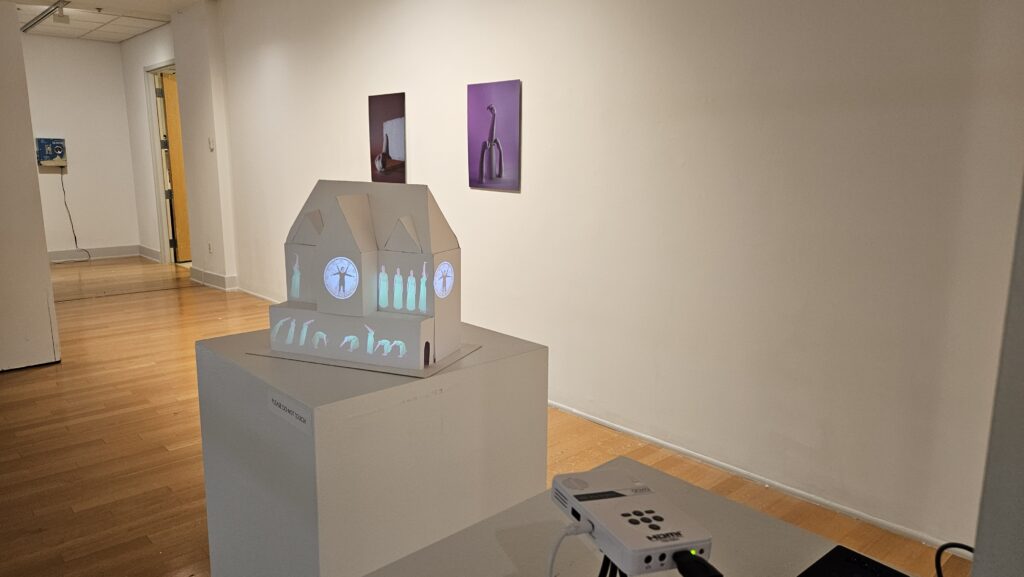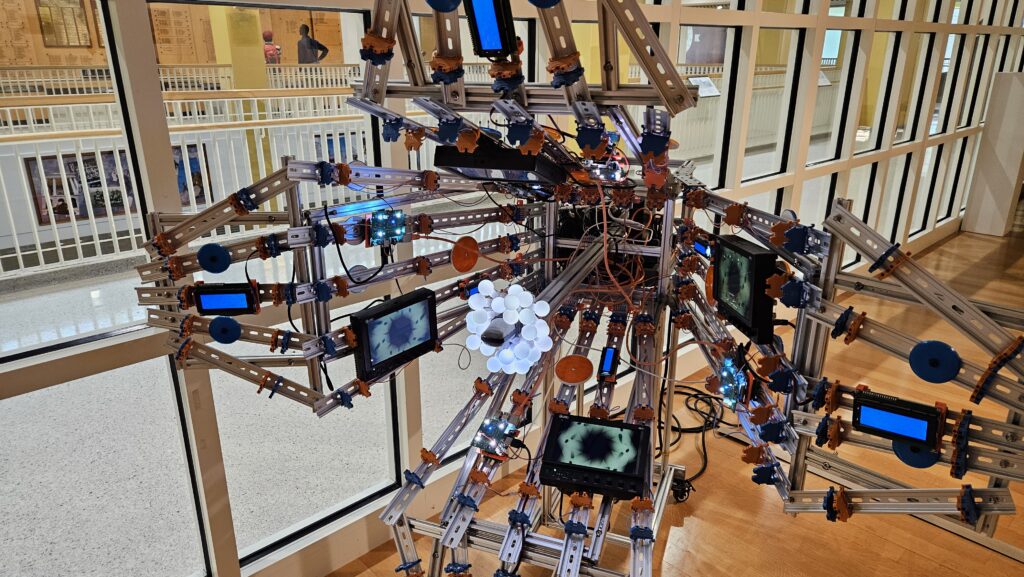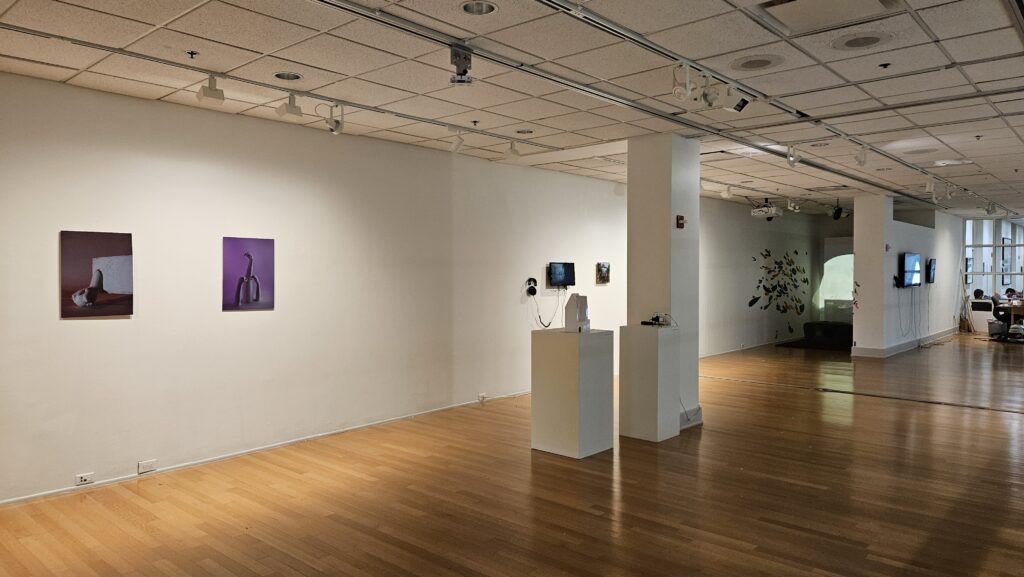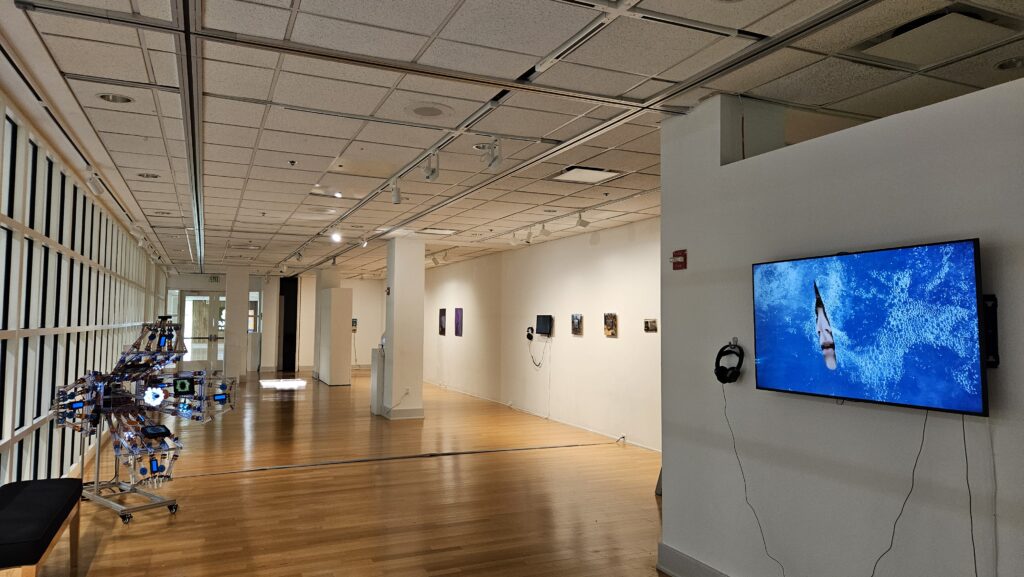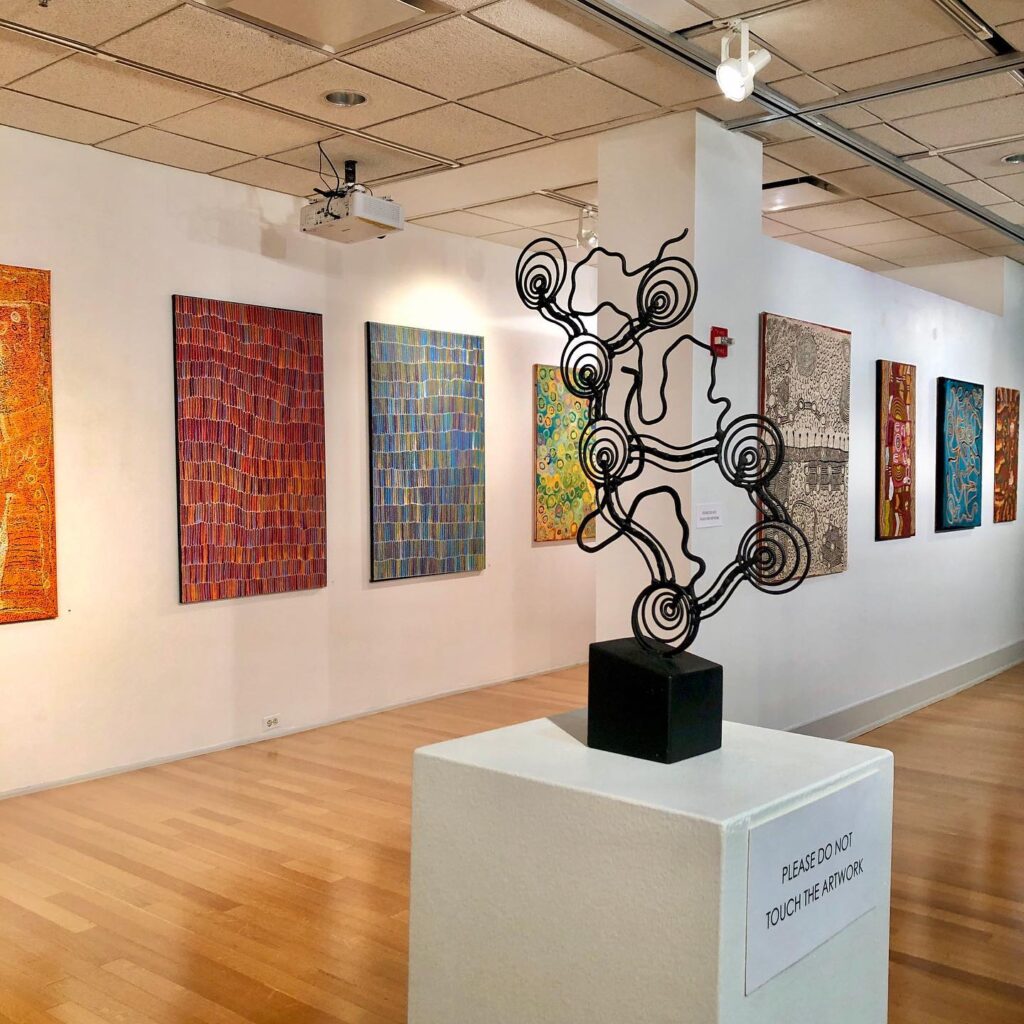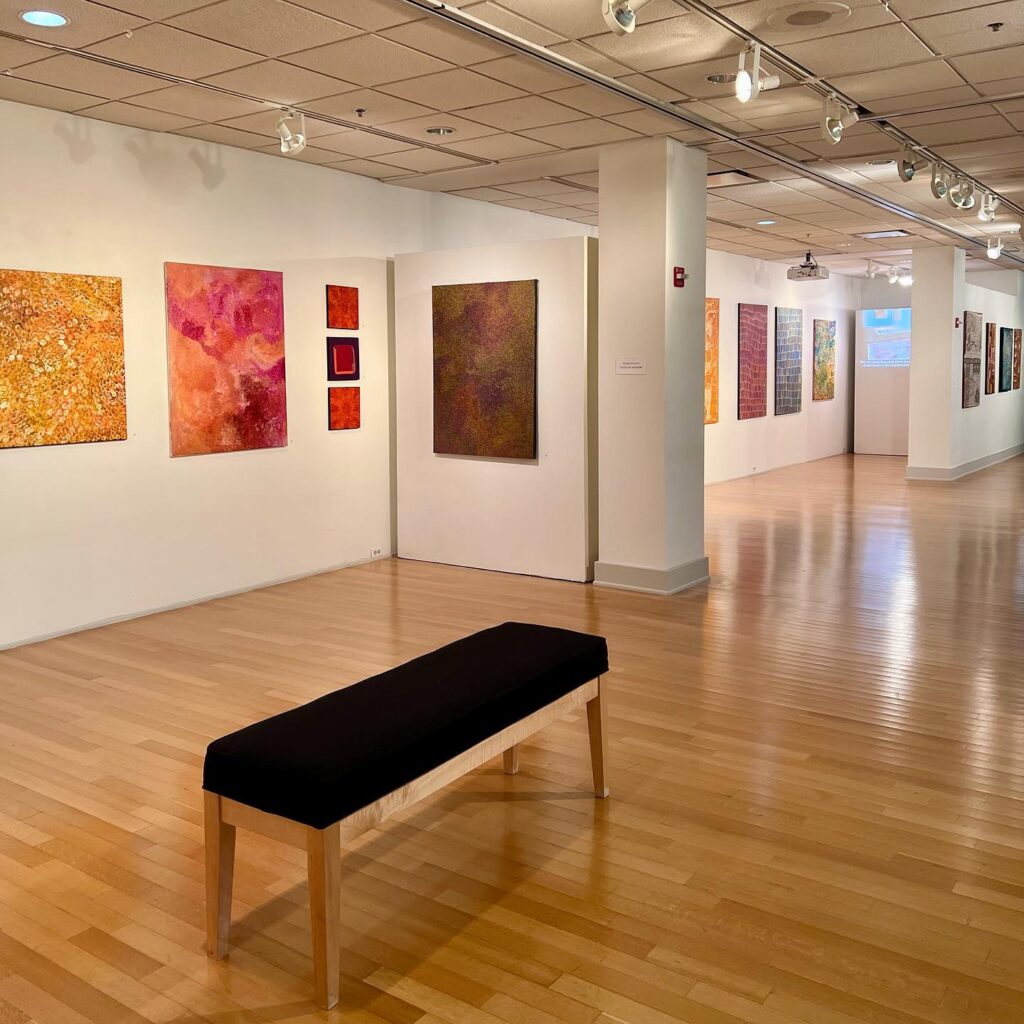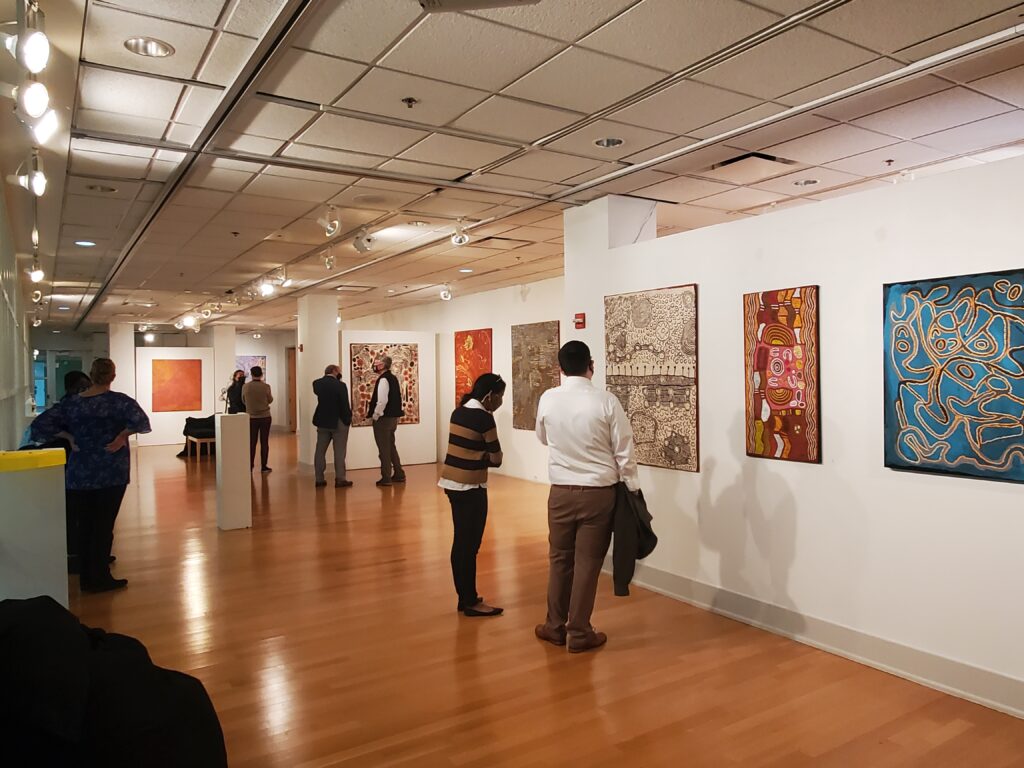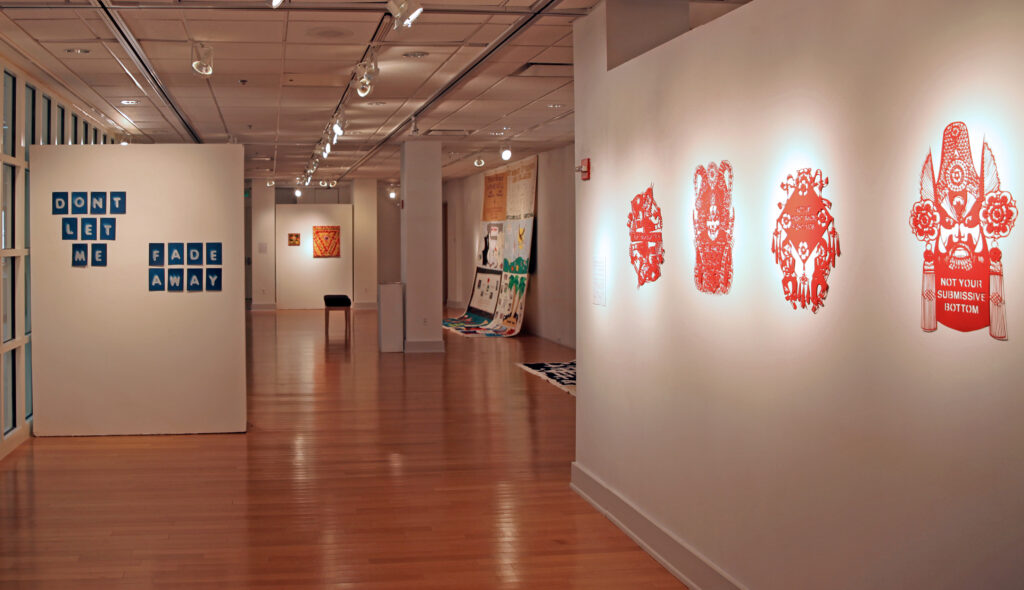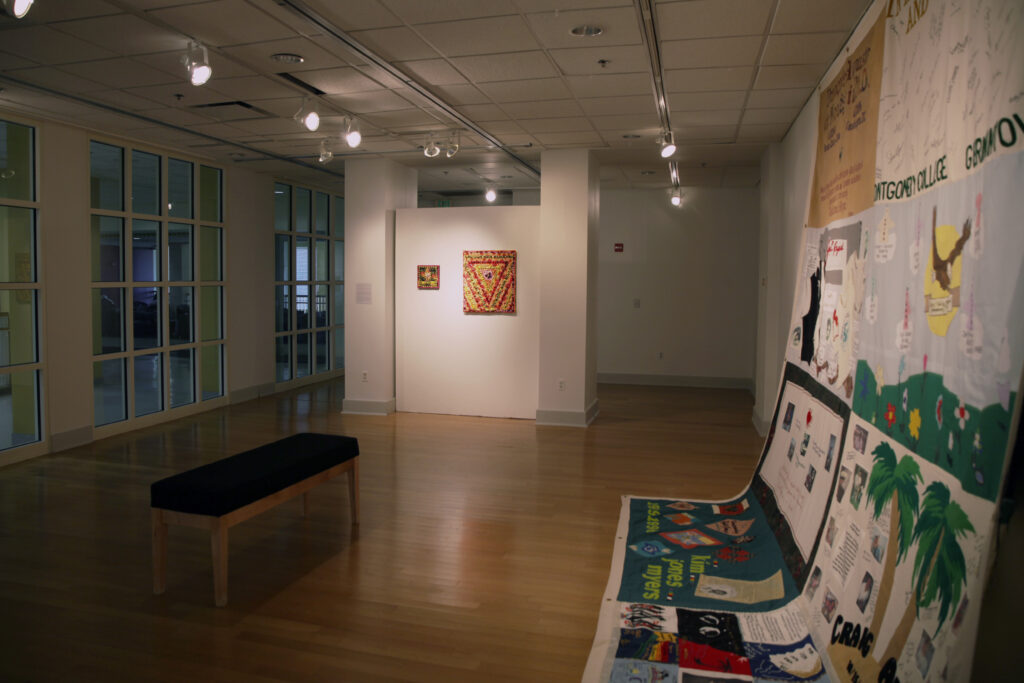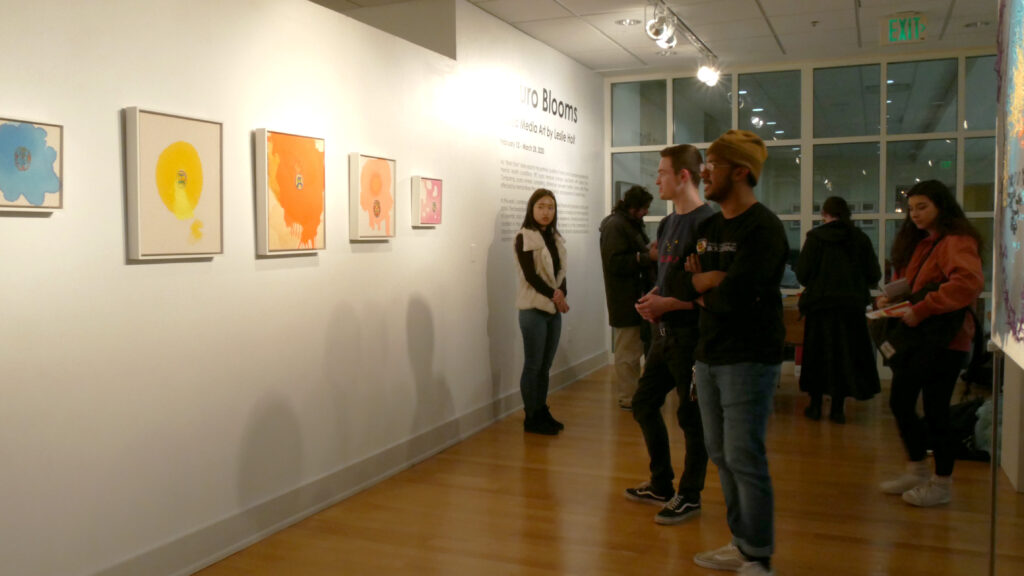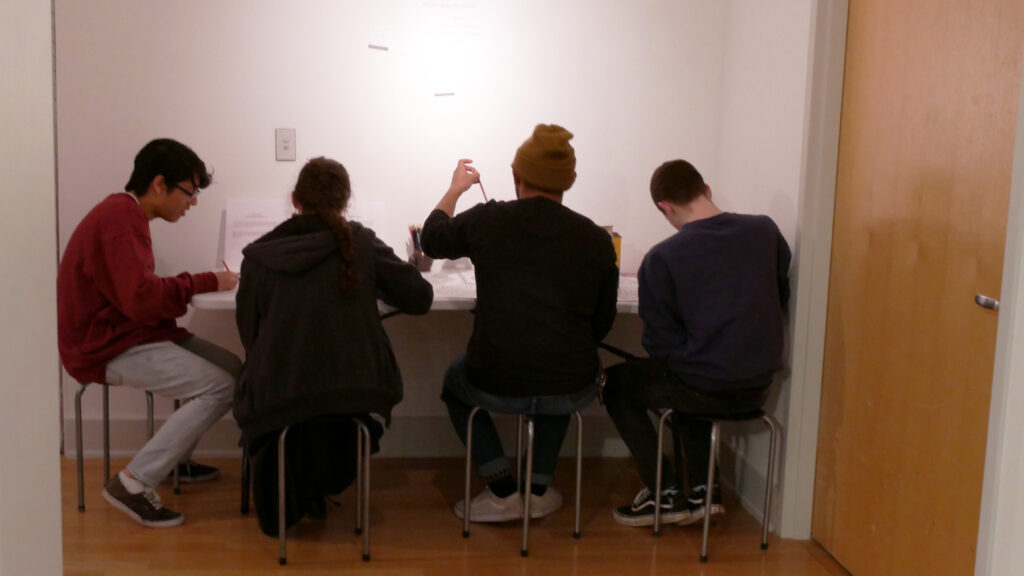Curatorial Work
The Digital Landscape
August 26-October 5, 2024
Featuring Mollye Bendell, Ally Christmas, Chris Combs, Billy Friebele, Michelle Lisa Herman, and Kat Navarro
From August 26 – October 5, 2024, the Stamp Gallery presented The Digital Landscape, a group exhibition of artists using a variety of technological media to both reinterpret and understand the physical environment as well as the ways in which the digital landscape is overlaid with the physical. Through their engagement with media from animation to augmented reality, machine learning, video, and photography the artists expand our sense of time and space through our digital experiences. These artworks examine and interact with the ways in which our digital environments are socially constructed, just as our ideas about borders, identity, and even what constitutes “nature” are products of historically determined systems.
Yams, Tomatoes, Potatoes, and Plums
October 25 – December 11, 2021
Featuring Works by Esther Bruno Nangala, Naata Nungurrayi, Jeannie Mills Pwerle, Lorna Ward Napanangka, Ningura Napurulla, Angelina Pwerle, Josepha Petrick Kemarre, Kathleen Ngala, Polly Ngale, Lorna Fencer Napurulla, Bessie Petyarre, Judy Watson Napangardi, Faith Butler, Stella Multkatana, Yinarupa Nangala, Tarisse King, and Tilau Nangala
Yams, Tomatoes, Potatoes, and Plums is an exhibition celebrating the bush tucker of First Nations Australia in paintings created by contemporary Indigenous Australian artists. On view October 25 through December 2021, The works in this exhibition feature imagery of Central Australian bush tucker. The term bush tucker refers to tucker (food) from the bush (bush referring to land – nature – the outback). Plant and insect foods are described in highly figurative and mystically abstract bush tucker paintings.
This exhibition was supported by the Department of Plant Sciences and Landscape Architecture, and One Health Arts and Sciences (onehealthgalleries.org), and the Maryland State Arts Council (msac.org) and organized with Dr. Andrea Ottesen
Still Here: Art on HIV/AIDS
October 29 – December 7, 2019
Featuring Works by Antonius-Tín Bui, Shan Kelley, John Paradiso, Lucas Rougeux, and panels from the NAMES Project AIDS Memorial Quilt
From October 29 – December 7, 2019, the Stamp Gallery at the University of Maryland, College Park, presented Still Here: Art on HIV/AIDS, an exhibition of contemporary artwork on HIV/AIDS in dialogue with panels from The NAMES Project Foundation AIDS Memorial Quilt.
The AIDS Memorial Quilt was last hosted in the STAMP Gallery 30 years ago. In the interceding years and despite many technological and medical advances, HIV/AIDS remains an epidemic that disproportionately impacts the dispossessed and marginalized: queer men, trans women, racial and ethnic minorities, intravenous drug users, and economically vulnerable sex workers. Political stagnation and apathy, failed policy, and insurmountable paywalls for preventative drugs remain major barriers to ending the epidemic. Much has changed since The Stamp Gallery last hosted The Quilt in the 1980s, but what political, social, and medical barriers to prevention and treatment remain? On view October 29th through December 7th, this exhibition included programming on World Aids Day and Day With(out) Art, December 1st. The Stamp Gallery will also partner with Visual AIDS to present STILL BEGINNING, a program of seven newly commissioned videos responding to the ongoing HIV/AIDS epidemic by Shanti Avirgan, Nguyen Tan Hoang, Carl George, Viva Ruiz, Iman Shervington, Jack Waters/Victor F.M. Torres, and Derrick Woods-Morrow.
Neuro Blooms: Mixed Media Art by Leslie Holt
February 12 – March 28, 2020
Leslie Holt’s “Brain Stain” series exploits the aesthetic qualities of PET brain scans of people experiencing mental health conditions. Holt combines solid areas of stitched embroidery thread with saturated acrylic paint stains. The translation of digital imagery into the handmade is a metaphor for the integration of scientific data with more nuanced and subjective experience. The Brain Stains combine objective data with a more poetic interpretation as a reflection of both corporeal and clinical experiences of mental illness. These works engage viewers with the science and lived experience of mental illness, but also with the hopes of creating conversation around and destigmatizing mental illness.
This exhibition included mental health resources, reflection activities, and crafts and programs to engage with the exhibition. There also was a pop-up library, created in collaboration with the Art Library at The University of Maryland, College Park, for visitors to further explore topics around the science of brain imaging and art engaging with topics of mental illness.
